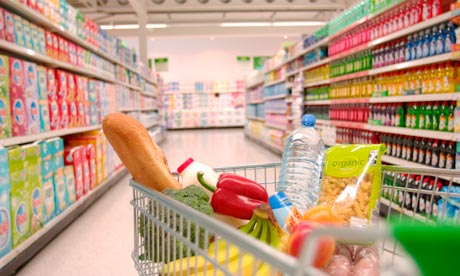October 24, 2013 — By Lisa Palmer
In 2008, students at the University of Texas at Austin left an average of just under six ounces of edible food on their lunch plates, which food service workers measured during a five-day waste audit. A year later, after identifying reasons for the waste and implementing programs to reduce it, such as better quality food, sample tasting and getting rid of trays, students reduced food waste by 48%.
According to Jason Pearson, of the Sustainable Purchasing Leadership Council, reducing food waste in higher education is one of the major ways sustainable purchasing can help improve the planet.
Waste seems the unlikely focus of a purchasing group, but as Pearson sees it, the goal of his organization is to “buy less and buy better.” The Council officially opened for business this summer. It has been five years in the making and is closely modeled on the United States Green Building Council’s LEED certification program. By developing a system of guidance for best practices, measurement and recognition that can be applied to a wide array of organizations, buyers can be much more strategic in their sustainable purchases, Pearson says.
Take the example of higher education. Of all the goods and services they purchase, 65% falls into five categories: electricity, food, fuel, agriculture and food products, and waste services. Roughly 85% of the environmental impacts in their supply chain can be attributed to those five categories, Pearson explains. Reducing food waste also reduces the social and environmental impact of those purchases in at least three categories: food, agriculture and food products, and waste services.
Outside of higher education, hotels chains, public institutions, and corporations face similar challenges. These challenges reflect those the green building market encountered in the 1990s before the LEED program offered sweeping guidance to builders and developers. With a flood of new products and services making green claims, and both buyers and marketers are increasingly frustrated by the bounty of options. People need clarity around what claims are legitimate.
Universities and colleges have been at the forefront of sustainable purchasing, along with federal, state, and local governments and Fortune 500 companies, because their sustainability goals tend to track carbon emissions of their supply chains. By zeroing in on each of the purchasing categories that contribute most to greenhouse gas emissions, purchasers can become more strategic in how their purchases affect the environment.
Yalmaz Siddiqui, senior director of environmental strategy at Office Depot, is a founding member of the Council. As a supplier, he says the Council provides a clearing-house that examines the environmental impacts of purchases. He says that clear guidance will help Office Depot, and other suppliers, provide the best prices for sustainable goods and services that impact the environment the least. In his words:
“The main thing that the SLPC can offer is a macro level view of what methods exist to reduce social and environmental impacts through purchases with a combination of life-cycle analysis and eco-label standards, and to help people focus on what matters most.”
“At the moment we’re sort of accidentally buying greener products without necessarily stepping back and saying, ‘What are we trying to do?’ And what we are trying to do is reduce the environmental impact of organizations through the way people buy. There’s a lot of interest in this area with a plethora of approaches, and none of which necessarily addresses ‘Where can we reduce the impacts the most?'”
Siddiqui says that by identifying the hurdles to making sustainable purchases, suppliers can have a clearer market signal on which products have the least impact on the environment and provide better pricing.
“We’re now in the zone of independent creation where the City of Portland has one approach, one position and one methodology of green procurement, the federal government has another, Target has another, JP Morgan has another, and and so on, so it’s not efficient both with the intellectual power going to independent efforts and by connecting the value chain.”
Over the past five years the Council has been developing a system of best practices that can be applied to a purchasing program and result in a certification. Like the LEED certification program, the program is trying to make buying green an easier task for procurement professionals in governments and large institutions, as well as service providers such as hospitals, hotels, banks, airlines and schools, which together account for about 75% of all consumer spending.
Between 6,000 and 7,000 procurement professionals control the vast majority of institutional buying. Their purchasing power, if well coordinated, has the potential to drive sweeping change in greening supply chains – a far more feasible task than trying to change the mindset of six billion people.
